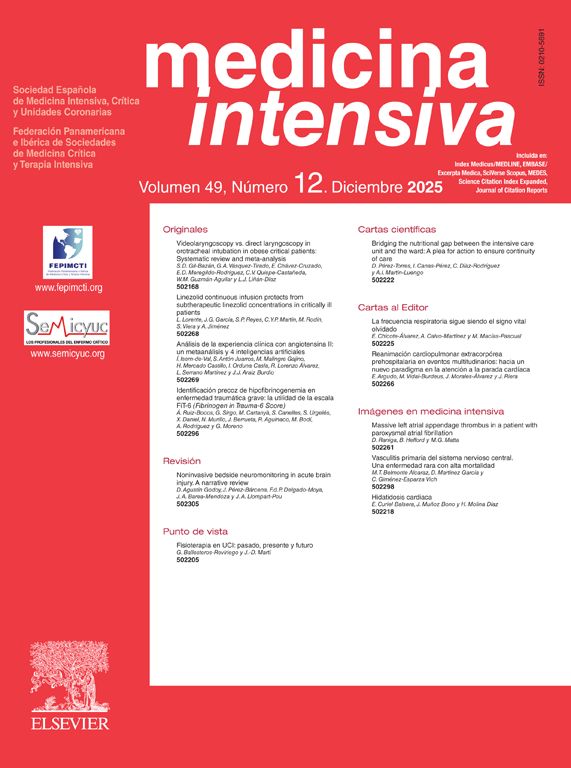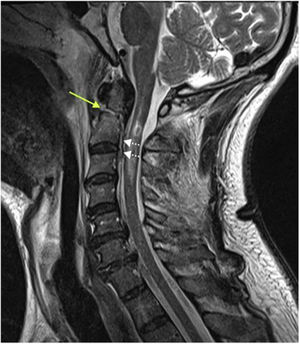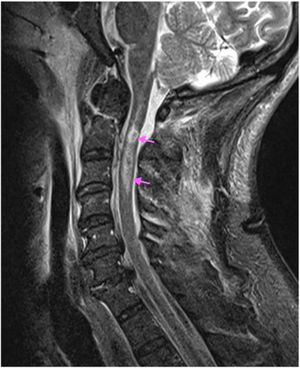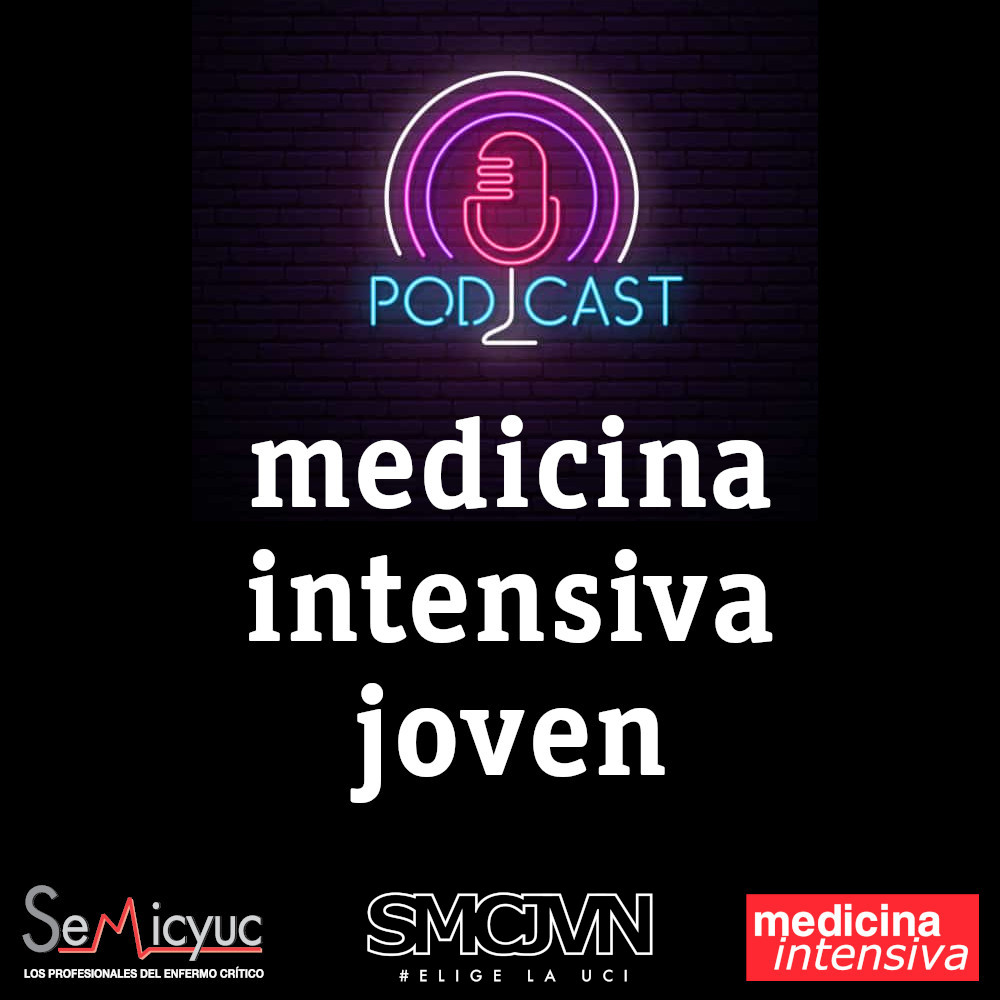Sixty-seven-year old male without known past medical history. He suffered from syncope and cardiorespiratory arrest (CRA) while riding his bicycle and was thrown off the road. He recovered his pulse after 34min after performing basic and advanced cardiopulmonary resuscitation maneuvers. The presence of ischemic heart disease, pulmonary thromboembolism, brain hemorrhage, and ischemic disease are discarded as causes for the CRA. The cerebral magnetic resonance imaging performed showed a fracture at the base of the odontoid process (green arrow) without displacement and small anterior epidural hematoma (indicated by discontinuous white arrows) without significant mass effect (Fig. 1). All of it accompanied by a spinal cord hemorrhagic contusion (pink arrows) from the C2 up to the C3 (Fig. 2). The patient progression was poor, and he died six days after admission at the intensive care unit.
Please cite this article as: Barber Ansón M, Orera Pérez Á, Redondo Díez E. Parada cardiorrespiratoria secundaria a fractura de odontoides. Med Intensiva. 2020;44:65.








